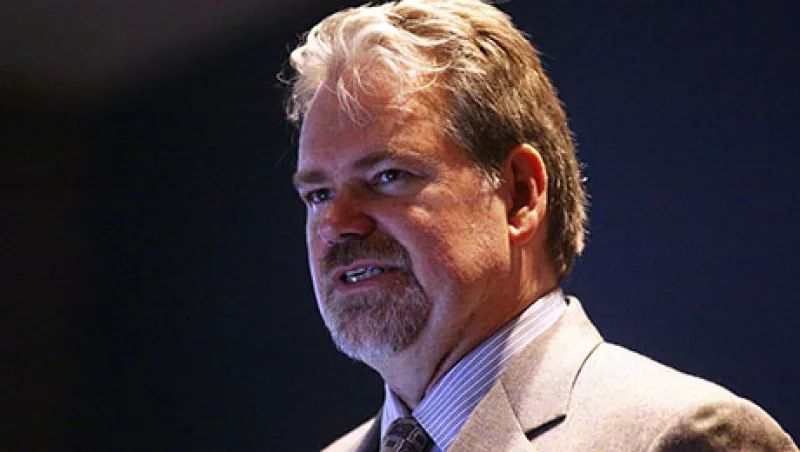At first, Fundamental indexation was dismissed as “just another clever repackaging of value investing,” recalls Rob Arnott, the leading light behind the idea. A decade ago the co-founder, chairman and CEO of Research Affiliates and two colleagues at the Newport Beach, California–based investment strategy firm introduced their alternative to traditional equity indexes. The promise: An index that weights each listed company using several metrics of its economic footprint could earn a premium over comparable indexes like the S&P 500 and the Russell 1000, which are based on market capitalization. The metrics for fundamental indexation include book value, earnings, revenue, sales, dividends and total number of employees.
Investors have since flocked to fundamental indexation exchange-traded funds. Licensees of the Research Affiliates Fundamental index (RAFI) methodology now use it to manage $140 billion in assets. Arnott rattles off several providers of RAFI strategies: BlackRock, Charles Schwab Corp., Invesco PowerShares, Pacific Investment Management Co. and State Street Corp. in the U.S.; Legal & General Group in the U.K.; Nomura Holdings in Japan; and Colonial First State’s Realindex Investments in Australia.
In the broader category of smart beta funds — rules-based passive vehicles that reject market-cap weighting — there are $402 billion in assets with 391 exchange-traded products, according to Chicago-based Morningstar, which calls them strategic beta funds. Then there are 33 RAFI strategies to which institutional investors have allocated, reports eVestment, a Marietta, Georgia–based data provider. At least one major public pension plan, the California Public Employees’ Retirement System, runs an in-house fundamental indexation strategy, an effort that began in 2006.
Critics initially found fault with evidence that fundamental indexation could yield superior returns, calling that finding “just a simulation, and all simulations look good,” Arnott remembers. Computer modeling of how the concept would have worked between 1962 and 2004 found that it could have generated annual excess returns of 1.97 percentage points over the S&P 500 or 2.15 percentage points over a reference portfolio of 1,000 U.S. stocks. Arnott presented those results in a 2005 paper for the Financial Analysts Journal that he co-wrote with Jason Hsu, co-founder and vice chairman of Research Affiliates, and Philip Moore, the firm’s former vice president of sales and marketing.
Market-cap weighting is the Achilles’ heel of traditional passive indexes, says Arnott, who believes investors grew frustrated because such indexes saw them “pulled into one bubble after another.” He argues that fundamental indexation solves the problem of chasing fads because it focuses on a company’s economic fundamentals. “We should want to own more of a company because its future return is likely to be better, not worse. And if the price is up, the future return is likely to be worse, not better,” Arnott says. “By severing the link to price, the fundamental index removes the propensity to overweight the overvalued and underweight the undervalued.”
One of the first fundamental indexation ETFs was the PowerShares FTSE RAFI US 1000 Portfolio (PRF), which launched in December 2005. Since its inception, this $4.5 billion fund has posted an average annual return of 98 basis points over the iShares Russell 1000 ETF (IWB), according to John Feyerer, vice president of ETF product management at Wheaton, Illinois–based Invesco PowerShares. By comparison, its underlying FTSE RAFI US 1000 index has enjoyed an excess return of 1.33 percentage points over the Russell 1000 index.
Arnott contends that the performance of fundamental indexation has persuaded investors to get onboard, even though excess returns are less than projected by the original analysis. As a result, fundamental indexation has “gone from being a provocative idea far outside the mainstream to being an acceptable alternative to cap weighting,” he says.
In recent years ETFs have been growing faster than any other investment product category, notes Ben Johnson, director of ETF research at Morningstar. The strategic beta subset, including fundamental indexation ETFs, has outstripped the ETF industry at large. “So strategic beta as been the fastest-growing segment of the fastest-growing segment of the asset management industry for a number of years,” Johnson says.
From a postcrisis low of $9 billion in 2009, investors boosted their combined net new allocation to strategic beta to $19.2 billion in 2010, $30.8 billion in 2012 and $60.3 billion last year. Between 2012 and 2014, total assets under management roughly doubled, from $203 billion to $402 billion.
As assets under management have grown, there’s been a flowering of product offerings. The early success of some “boring” sector funds and country funds “opened the door for a whole array of smart beta strategies,” Arnott says. One recent standout is the PIMCO Low Volatility RAFI Plus Absolute Return Fund (PILVX), which manages almost $1.5 billion after its first year. In 2014 the strategy’s 15.44 percent return beat its underlying FTSE RAFI Low Volatility index by 1.75 percentage points.
Morningstar’s Johnson expects significant future inflows to ETFs and beta strategies, along with a broader product set. “We’re still very much in the early innings,” he says.






